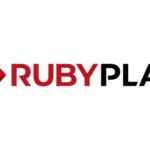Shaan Devaraj joins Xpoint as Chief Technology Officer

Geolocation and compliance technology company Xpoint on Tuesday appointed Shaan Devaraj as Chief Technology Officer.
Devaraj has more than three decades of experience and expertise in geolocation technology, and has secured a series of landmark patents in the field. Devaraj also has experience in software engineering, cybersecurity, cloud infrastructure and service-oriented architecture.
“We are thrilled to welcome Shaan to Xpoint, bringing his extensive experience in the igaming industry and in developing innovative geolocation solutions for regulated markets,” Xpoint CEO Manu Gambhir said in a statement. “He joins us at an exciting time for the company as we continue the recent commercial momentum.”
Devaraj is co-inventor of the world’s first remote gaming server and has held multiple C-level and senior positions in the igaming industry. Most recently, he served as Chief Technology Officer at United Interactive, where he launched the igaming platform Symphony and the business-to-consumer brand Bet United.
Prior to that, Devaraj spent 14 years at IGT’s Double Down Interactive, where he held several senior technology roles, including Director of Software Development and Architecture.
“It’s an honor to join Xpoint as CTO,” Devaraj said. “I look forward to helping the company grow by strengthening our technology, supporting our teams, and turning our big ideas into real results.
“I’m also excited to collaborate with the leadership team in continuing their commitment to pushing boundaries.”
Devaraj will work closely with Gambhir and the executive team guiding the engineering team, with an emphasis on the continued development of geolocation technology.
Verticals:
Sectors:
Topics:
Dig Deeper
The Backstory
Why the CTO move lands at a pivotal moment
Xpoint’s decision to tap a veteran geolocation technologist as chief technology officer comes as the industry’s technical stakes rise. Operators and suppliers are racing to harden location, identity and compliance layers while scaling content and platforms across state lines. That makes leadership with deep architectural chops less a luxury than a requirement. The timing also reflects a broader reshuffle across gaming, where technology chiefs and product leads are being elevated to set companywide strategy, not just keep the pipes running.
In regulated markets, geolocation is a gating feature. It must be precise, fast and resilient against fraud. It also needs to evolve with state patchworks and shifting enforcement. Xpoint’s engineering roadmap will sit at the nexus of those demands, and the company has been signaling it will compete on both accuracy and speed. The new CTO inherits a mandate to extend that edge and translate it into commercial wins as more states mature and new products come online.
The broader backdrop: operators are expanding portfolios, regulators are tightening oversight and suppliers are consolidating product control. That convergence puts pressure on the middleware that proves where a bet is placed and whether a user is permitted to play. The companies that execute on this plumbing gain leverage in negotiations and stickier integrations with top-tier platforms.
Xpoint has been building out its bench
The CTO hire follows a series of leadership additions designed to tighten execution and scale operations. Earlier this year, Xpoint named a seasoned product and strategy operator as chief of staff, a role tasked with driving cross-company alignment and operational rigor. The company said the appointment would help it “further establish” its position as a geolocation technology provider and expand its footprint. Read more on that move here: Xpoint names Chris Boni as Chief of Staff.
Leadership layering matters for a supplier selling critical infrastructure. A chief of staff can unblock delivery, standardize processes and keep road maps connected to commercial priorities. Paired with a CTO focused on scale and resiliency, Xpoint is setting up a structure to push new features to market faster while keeping compliance central. The sequencing suggests the company is preparing for heavier demand from operators that want single integrations to cover multiple states and product types.
The internal build-out also aligns with comments from Xpoint’s top executives who have framed this period as an inflection in commercial momentum. A sharpened operating cadence should help convert proofs of concept into long-term contracts and speed up certifications.
Operators are upgrading the tech stack at the top
Xpoint’s customers are themselves reshaping their technology leadership to move faster and personalize at scale. Rush Street Interactive appointed Shubham Tyagi as CTO, bringing in a leader with global media and sports streaming experience. The choice underscores how online gaming now competes on live operations, data pipelines and broadcast-grade reliability. RSI highlighted the need to scale platforms for millions of users and to deliver “player-first experiences,” a signal that the operator expects its vendors to match that ambition.
RSI has been expanding content partnerships in key states, including Delaware and New Jersey, to keep its library fresh and differentiated. Those deals demand stable integrations and rigorous geofencing to ensure state-by-state compliance. The operator lens is clear: the faster a supplier can certify updates, the more attractive it becomes in a crowded bid slate. For geolocation providers like Xpoint, that translates to a premium on throughput, testing automation and low-latency location calls that do not degrade the front-end experience.
Product consolidation is reshaping supplier priorities
Suppliers are also centralizing product decisions to reduce duplication and drive a unified content strategy. Light & Wonder elevated Nathan Drane to chief product officer across the enterprise, bringing all game creation under one umbrella. The company framed the move as a push toward cross-platform execution and a data-driven roadmap. For infrastructure partners, that shift means fewer, deeper integrations and higher bars on telemetry, observability and compliance tooling embedded into software development.
Content studios are aligning their finance and go-to-market functions with U.S. expansion in mind. RubyPlay named Motti Gil as CFO to guide international growth after entering the U.S. through a Rush Street Interactive partnership. As studios scale into new jurisdictions, they lean on geolocation and risk vendors to clear technical due diligence with operators and regulators. A CTO at a geolocation firm who can translate regulatory needs into clean APIs and audit trails becomes a competitive asset in that chain.
The consequence is a tighter coupling between product, finance and compliance across the ecosystem. When a supplier consolidates product governance and a studio retools its finance leadership for expansion, the demands cascade to the compliance stack. That is where geolocation earns or loses trust.
Regulatory pressure keeps compliance front and center
Compliance leaders across the public sector are also stepping up. The New Hampshire Lottery appointed Cooley Arroyo as chief compliance officer to oversee legal and regulatory reviews and to ensure contractors and licensees meet standards. Moves like this suggest lotteries and regulators will keep tightening oversight as igaming and sports betting expand. Vendors that cannot document controls or adapt quickly to new guidance risk being sidelined from procurement or subjected to costly remediation.
For geolocation, that means more than pinpointing coordinates. It requires robust identity linkage, device integrity checks and anomaly detection to spot location spoofing and cross-border play. It also requires clear logs, reproducible test results and rapid response to regulator inquiries. A CTO with a background in patents, cloud architecture and secure systems is expected to embed these controls by design rather than bolt them on after contracts are signed.
Stronger compliance leadership at state agencies tends to raise the floor on technology standards. Vendors that invest early in validation frameworks and third-party attestations can shorten sales cycles and reduce churn. In turn, they can free up engineering capacity to build features that improve conversion and retention for operators.
What the industry will watch next
With operators refreshing top tech roles and suppliers centralizing product, the next phase will test execution. For Xpoint, the benchmarks are straightforward: faster integrations, measurable reductions in false positives and service-level uptime that holds during peak events. Wins with prominent operators or lotteries would validate the strategy.
For operators like RSI, the gauge will be the speed of feature delivery and stability during tentpole sports moments. Partnerships with content studios such as RubyPlay add variety but also integration complexity. The smoother the compliance stack, the faster those titles can reach market in each state.
Supplier-side, Light & Wonder’s centralized product model will be judged by the hit rate of games and the efficiency of its development pipeline. If content velocity improves without sacrificing quality, expect others to follow suit, further concentrating product decisions and raising expectations for supporting infrastructure.
The common thread is governance built into the code. As compliance expectations grow and user experience becomes the competitive edge, the companies that turn regulatory constraints into engineering advantages will have room to run. Xpoint’s CTO choice sits squarely in that shift.








